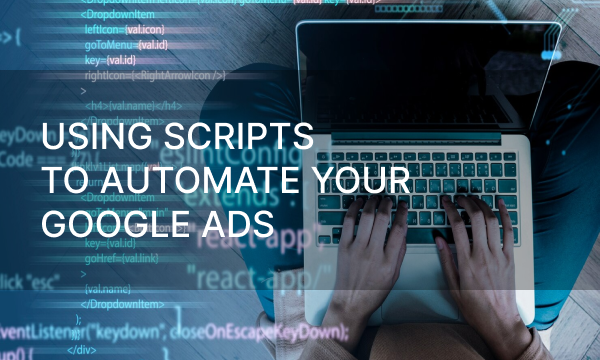There are many ways to enhance or adjust the performance of your advertising campaigns. One of the simplest, yet efficient tools are negative keywords. This tool is similar to regular keywords you have already implemented into your Google Ads campaigns, however, there are some peculiarities to note.
Quick Links
The Importance of Using Negative Keywords
How to Implement Negative Keywords
Tips for Efficient Use of Negative Keywords
Research Tools and Keyword Generators
What Are Negative Keywords?
Despite containing the word “negative” in the name, using negative keywords actually has quite the opposite effect on the accuracy and the overall performance of your advertising campaigns.
In pay-per-click advertising strategy, negative keywords are used for optimization purposes and allow to exclude certain search engine results from triggering the ads. This is done to eliminate from the campaign web search queries that are highly unlikely to result in a sale. For example, a campaign may be advertising for “bike rental shops”, but keywords like “bike shops” or “buy bike” will not drive the right audience to the campaign and so have to be excluded.
In addition, negative keywords can be used for directing traffic to a specific advertising campaign. For example, you have two ad campaigns: one for bike rental services and another for bike repair services. If your campaign settings are too vague, searchers for rental services may every now and then get repair services advertising shown instead of the rental campaign and vice versa. To prevent that from happening and to drive the most relevant ads to potential clients, negative keywords can be implemented into your campaigns.
Keywords Match Types
There are three types of keywords that can be used in your advertising campaigns. They differ based on the match accuracy of the negative keywords in regards to the search results of potential users:
- Negative broad match – your advertising is shown to potential clients whose searches are relative to your chosen negative keywords, however, the exact keywords you chose will not be targeted;
- Negative phrase match – advertisements show up in the searches where the web query may partially include the negative keywords you put in. However, the specific phrasing of your keywords will not be targeted;
- Negative exact match – advertisements will be excluded from the exact phrasing or words strictly in regards to the negative keyword input. Any other variation or synonyms of the keywords will be triggering the ad campaign.
The Importance of Using Negative Keywords
As any optimization tool Google Ads has to offer, negative keywords provide many benefits.
First of all, optimizing your advertisement campaigns gets you more relevant results, because implementing negative keywords helps the campaign show your ads to people who are actually interested in your product and are getting ready to buy rather than just collecting information, thus raising the chance that the advertisement will produce a return.
Second of all, using negative keywords saves time and money you otherwise would have spent running less relevant and successful advertisements in attempts to figure out why you’re not getting the best results. Those saved resources can now be spent on further improvement or creation of other campaigns. mosbet.group
Lastly, in order to properly analyze and further optimize your advertisement campaigns, you need to use the full set of optimization tools that you have at your disposal. Only then, covering all possible changes in performance and tracking where those changes come from, will you be able to create and run a fully relevant, highly profitable advertisement campaign.
That being said, negative keywords are great for:
- Getting more accurate clicks that more often result in sales;
- Exposing advertising campaigns to more relevant searchers;
- Saving finances and time that otherwise would be wasted on inadequate advertising;
- Helping to keep your campaign organized and optimized.
How to Implement Negative Keywords
Just like any other optimization tool, keywords have a separate tab dedicated to them in the Google Ads. In there you are able to set rules for the usage of your keywords, for example, the match type, and turn them negative. This action will allow you to implement negative keywords individually and work with them separately in the future. However, you can also assign a negative keyword list that can be used in several advertisement campaigns.
Individual Negative Keywords
Adding negative keywords to your advertisement campaign manually makes your rules more accurate and personalized for each campaign. In addition, different campaigns may need more or less keywords used to navigate traffic around and prioritize different ads.
However, it can take much more time to set up your keywords if you have several campaigns running separately . Aside from that, depending on the initial results of your campaigns, you will have to revisit and review all your keywords in order to include or exclude anything from the rules.
Negative Keyword Lists
If you don’t want to manually add and manage negative keywords in each campaign you run, you can implement a list of keywords that will be used as a whole and can be added to several campaigns at the same time. Such lists prove to be a good starting point of general negative keywords for specific topics and can provide relatively accurate first results.
On the other hand, keyword lists get obsolete over time. This means that after some time of using a list and adding keywords to it the rules it provides may override each other and contradict or create tough restrictions that will block other keywords your ad campaign is trying to reach. This typically leads to a substantial drop in relevancy and efficiency of the campaign due to these lists blocking potential traffic from seeing your advertisements.
All in all, whichever way you choose to add negative keywords to your ad campaigns is up to you, as they both have pros and cons that can be managed as long as the ad rules are maintained properly and on time.
Tips for Efficient Use of Negative Keywords
Of course, by implementing negative keywords into your ad campaigns you will already gain improvements on the performance of your advertisements. However, there are some tips that can better your results even further when using negative keywords.
Targeting Keyword Intent
Up until this point, for exemplary purposes, it has been assumed that the intent of your ad campaigns is to drive sales of whatever product being advertised. Nonetheless, there are other intentions that may rely heavily on the usage of keywords, such as providing information, reviewing and teaching or navigating to specific resources. That being said, the theme of your keywords should not just depend on the product featured in your ad campaign, but also on the intent you are featuring the product with.
For example, if your intent is to provide information on a product to get certain answers, popular keywords used regularly or negatively can include, but aren’t limited to interrogative words such as “how” or “what”, or targeted words like “tutorial”, “guide” or “step-by-step”. If your intent is to provide further information for investigation purposes, e.g., comparing prices or reviews on a product, keywords like “best”, “review”, “price” or similar can be used. Finally, navigational intent targets keywords such as brand names, websites, certain services that ad campaigns can lead a potential client to.
Whatever intent your ad campaign carries, together with the product theme they will determine the type of negative keywords you will have to use to efficiently guide web searchers to your product.
Research Tools and Keyword Generators
If you have a fairly vague idea of what keywords you can use for your product and intent, you can use various keyword generators that will give you a list of potential keywords you can include or exclude from your advertisement campaign.
These keywords will be based on the link you provide to your services or the main keyword or phrase and will range from precise to vague and relative. This list will give you a general idea and a direction to start your marketing trials. Based on these keywords, you can start your campaign and later analyze how well it is doing and whether or not your advertisement needs any adjusting.
PPC Reports
Lastly, don’t forget to regularly go through Google Ads built-in reports section that provides you with plenty of gathered results on how your advertisement has been performing.
Negative keyword performance can be found in the search terms section, in which you can review exactly what keywords work and tunnel your campaign in the right direction for the right crowd. All this performance data combined should provide you with enough results to adjust and improve your ad campaigns to be the most relevant and profitable they can be.
In Conclusion
To summarize, negative keywords are a great optimization tool that adjusts what web search queries trigger your campaign and therefore which people end up seeing your advertisement. They save time and money, raise the relevancy of your ad campaigns and serve as an analysis base for your ad performance.
To maintain your keywords, they can be restricted to one of the three types that define how precise or vague the web searches have to be in order to result in showing the ad. In addition, depending on your advertising intent, you can use different categories of keywords to yield the best results.
After implementing negative keywords into your Google Ads campaign, don’t forget to review the performance reports that the service provides you with. These reports will show exactly which keywords did best and which ones need adjusting.
All in all, like any other optimization tool, negative keywords provide a way to improve your campaigns., However, you’ll need to learn how to use them and review the results to perfect your advertisement.



